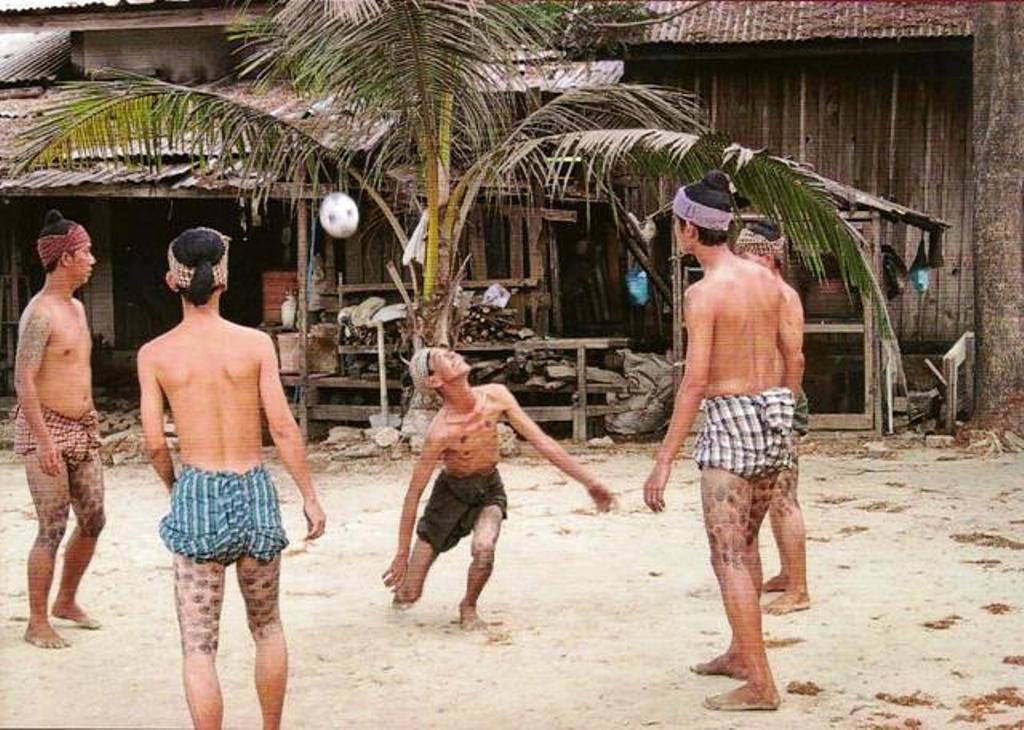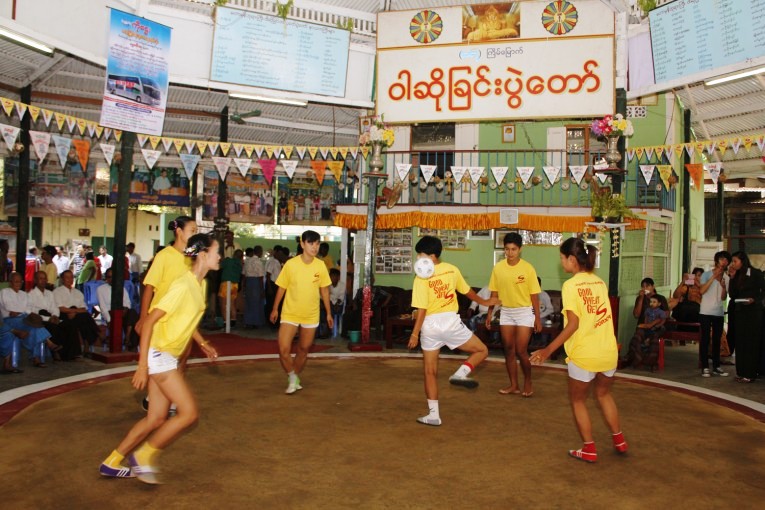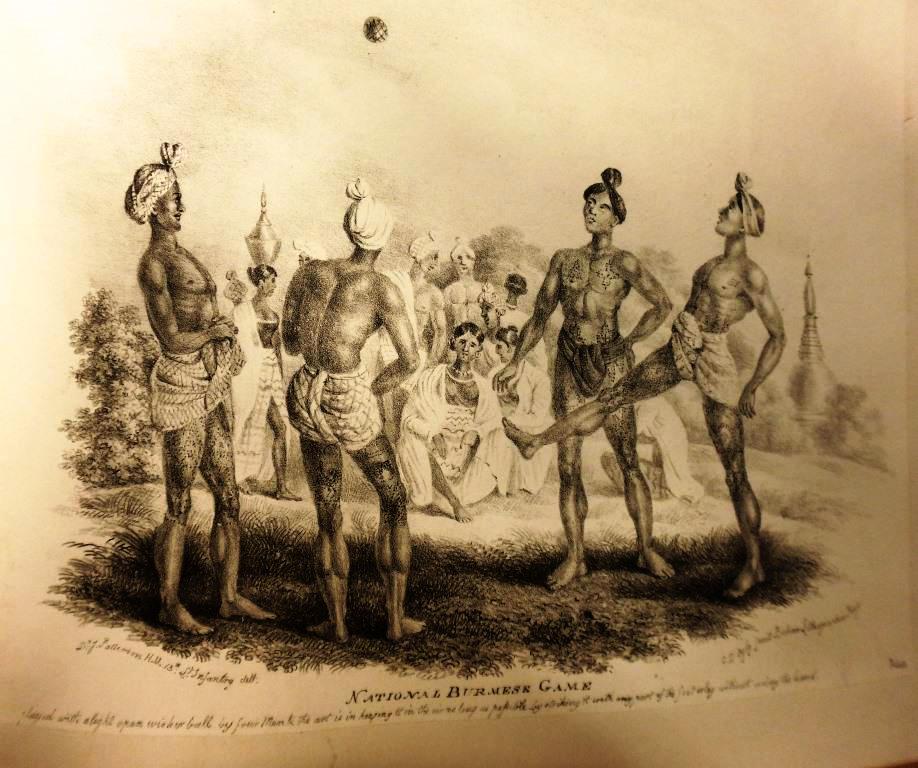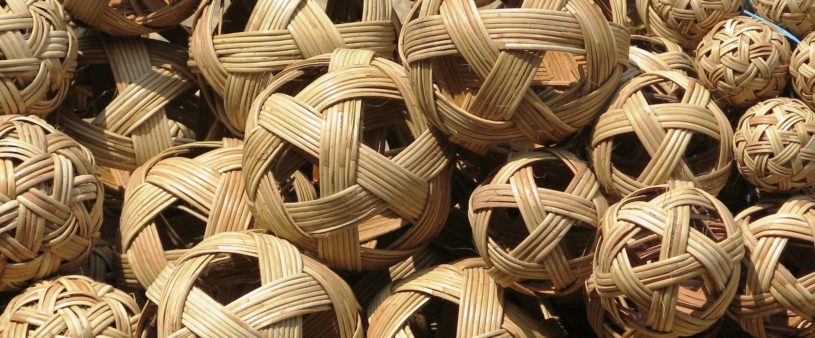Chinlone, which is also known as caneball, is the traditional sport of Burma or Myanmar. Chinlone is a team sport which is a combination of sport and dance. Chinlone is more on creativity and not competitiveness. Chinlone in Burmese means basket-round or rounded basket. The ball is made from rattan.
The game is played by two teams with six players each. They pass the ball back and forth using their feet, knees, and their heads as they walk around a circle. While the rest pass the ball around, a player goes into the middle alone, and the player creates a dance of different moves strung together. If they drop the ball to the ground, the play should start again.
This game is usually played barefoot or using chinlone shoes that will let the players feel the ball and the ground. The players can make contact with the ball through the top of their toes, the inner and outer sides of the foot, the heel, the sole, and the knee. The sport requires extreme flexibility, agility and fitness as well as exceptional coordination.
Chinlone has played a prominent role in Myanmar for about 1,500 years. It’s style is so performance based because it was first created as a means of entertaining Burmese royalty. Chinlone is heavily influenced by traditional Burmese martial art and dance, another reason as to why so much importance is placed upon technique. As it is such an old game, many variations have been made to it, including hundreds of different ways or moves to use when maneuvering the ball.

In addition to the original form of chinlone, there is a single performance style as well. This form of chinlone is called “tapandaing.” While chinlone had been widely considered by Europeans to more of a game than a sport, international interest in chinlone grew rapidly. By 1911, chinlone teams were performing in parts of Europe and Asia. As spectators of chinlone, Europeans deemed it to be merely a game of indigenous people, too effeminate to be considered a sport.
After Myanmar’s independence from British colonial rule in 1948, many British influences and cultural practices lingered, including British sports such as polo. Past British colonialism still weighed heavily upon Burmese life. From the 1960’s and onward, there was a big governmental push for traditional and historical preservation. The premise was for cultural pride to be renewed.
Myanmar needed traditions that were unique to Burmese culture, free from any colonial influence. Chinlone fit this role perfectly, playing a key part in establishing Myanmar nationalism. Myanmar began implementing physical education in schools, teaching children from a young age about traditional sports like chinlone, as a way to educate and pride them on their culture. This was a small yet effective way in reestablishing Burmese life after colonial rule. With this new found nationalism, chinlone was finally considered a real sport.

Nowadays, chinlone is played by men and women, young and old alike. It is a very common scene in both urban and rural areas to witness a circle of men barefoot with their longyis hiked up and wrapped around their legs and waists spending the final hours of daylight in intense concentration passing the ball around, honing their skills and getting some exercise with friends.
This casual form of the sport hops right up to a formal and more competitive form at the annual Waso Chinlone Festival held in a small stadium in the grounds of the famous Mahamuni Pagoda in Mandalay. The festival takes place for a month around the full moon of Waso. Teams from all over the country travel to Mandalay to perform to live, loud and rhythmic traditional Burmese music at this festival.
A commentator provides lively narration on what the players are doing while panel of judges rates them on their style and form. They perform as a team but not against any other team. For the first time, chinlone was an official sport at the SEA Games hosted by Myanmar in 2013 when Myanmar won gold medals in six out of eight categories.

Thank you for Reading!







